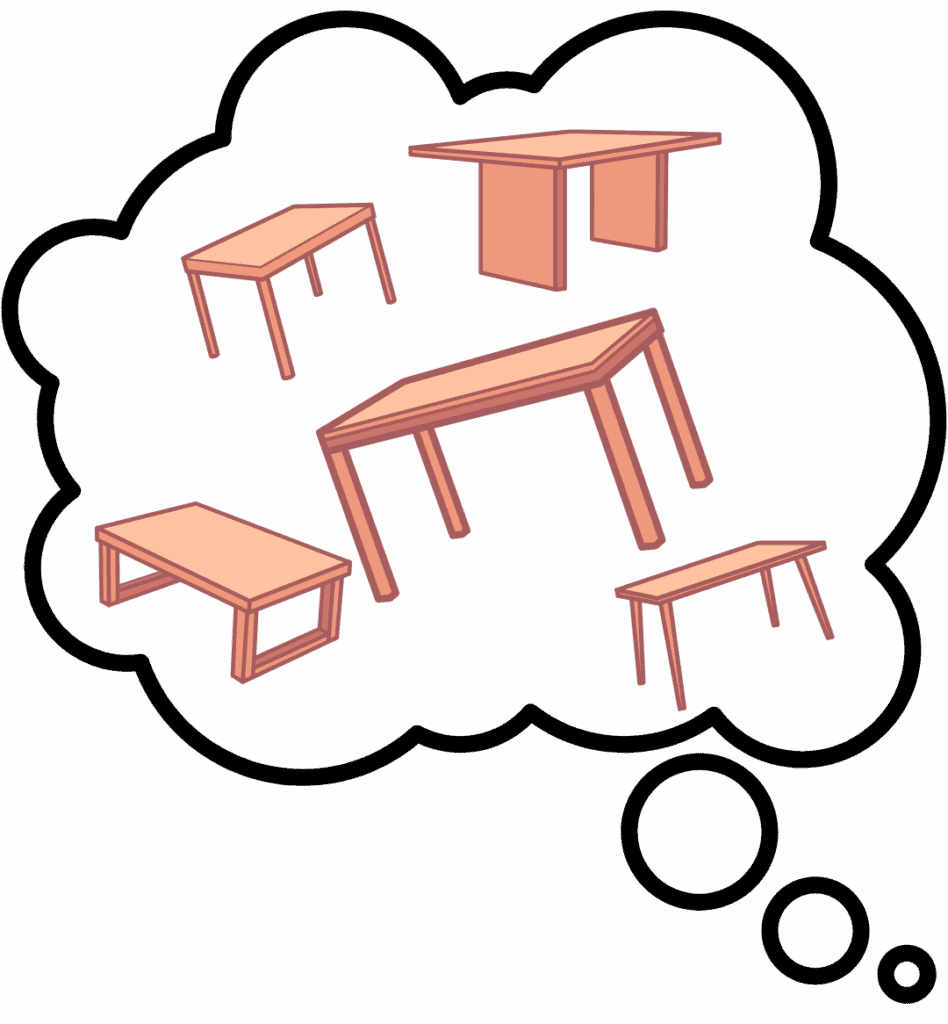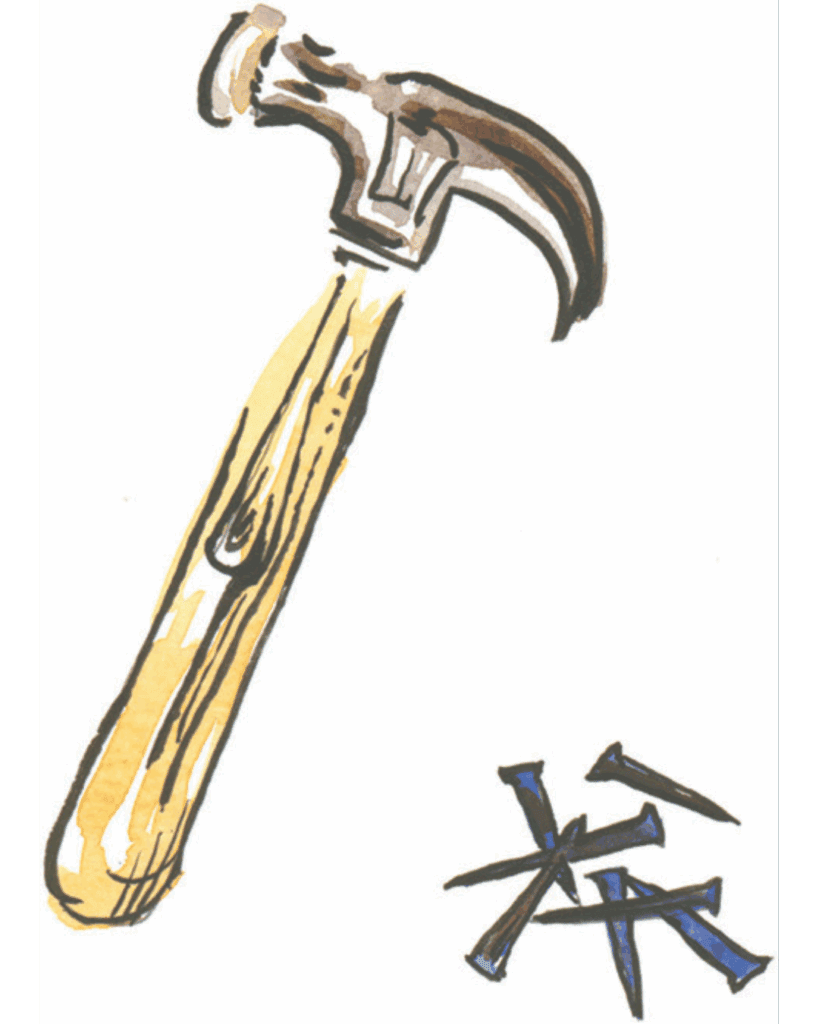An Excerpt from Stories from the Heart.
Written by Oak Meadow founder Lawrence Williams, Stories from the Heart offers thoughtful, funny, and poignant reflections on teaching, parenting, and learning.
Often when we’re teaching our children, we get caught up in our own plans and agenda, and we forget to listen to what our children are telling us. When this happens, we block the learning process and prevent our children from expressing their own innate intelligence. In addition, we lose valuable opportunities for developing close bonds that can last a lifetime. Listening involves more than just hearing the words our children are saying. It means feeling what is in their hearts, putting aside our own concepts, and honoring their intentions. Several years ago, something happened to me that brought this home very clearly.
My son, Christopher, who was ten years old at the time, came to me one morning and said he wanted to build a table. As a homeschooling parent, I thought immediately of all the possibilities for learning inherent in such a project. “Great!” I thought. “Here’s a wonderful opportunity to teach him something about design, carpentry, and math all at the same time.”

He described clearly what he wanted: a small table that would fit next to his bed, something to hold a lamp and a few things he would dump out of his pockets at night. As he was describing the table he wanted to make, my mind began working. If we’re going to make a table, why not make it a really nice table? Sure! This could be a project we could work on for days, even weeks! And just think of all the things we’d learn in the process!
I got excited about the project, so I launched into my lecture about the important factors to consider in designing tables. As I talked, the image of the table began to take vivid shape. In my mind, this was a table for the ages. I could see it—fine wood, sanded edges, brass screws, satin finish—gracing his room for years to come, and probably being handed down to future generations as an heirloom, a moral lesson in the value of hard work and perseverance, and a reminder of the deep satisfaction Chris and his dad experienced as they built the table together.
But as we started sketching out a rough diagram of the table, I soon began to realize that Chris’s vision for this project wasn’t the same as mine. He wasn’t interested in a finely crafted piece of furniture. He just wanted a table, and he wanted it fast. In his mind, this was probably going to be finished before lunch, and then he’d be off to other things.
At this point, I should have let go of my own agenda for the project, listened closely to his vision, and determined what I could do to help him achieve it. But I had become enthralled by the form I had envisioned, and I couldn’t let go of it. To rationalize my agenda, I told myself that making a table wasn’t the real importance of this project—the primary purpose was to teach Chris a lesson in character. “After all,” I reasoned to myself, “Chris doesn’t pay attention to details. If I don’t help him learn how to do this, who will? And this is a perfect opportunity!” So I buried his interests and continued to refine my drawing to greater detail, right down to where the screws would go.
I noticed that Chris was losing interest, so I moved quickly into my presentation of inches, feet, and fractional numbers, so we could determine exactly how long to make the legs and where to place the screws. After a few minutes, I noticed he wasn’t even looking at me anymore; he was staring off into space. Still unable to see what was happening, I charged into my lecture about the importance of perseverance, that everything isn’t fun in life, and that we have to do some things we don’t like to get what we want.
After a few minutes of this, he exploded.
“All I want to do is make a table!” he screamed. “I don’t want a lecture about all that other stuff!”
“But how do you expect to make a table,” I replied in exasperation, “if you don’t understand how to do those things?”
“I’ll just make it, that’s how!” he screamed.
Finally, I realized what I was doing. In my obsession with the form of the table, I wasn’t paying attention to what Chris really wanted.
Chris wanted to make a table, and he was ready to go. Instead of moving with him, however, I was pushing against him because I wanted to

do it my way. For him, building a table was a physical act, but I was making it into a mental act. And to make it even worse, now I was turning it into a moral lesson as well.
The choice was simple: I could either hold out for my agenda and lose Chris, or agree to do it his way and we could work on it together. But what about the heirloom table that was going to be handed down to my grandchildren? Well, there are lots of different kinds of tables in the world, and this particular table was obviously not going to be an heirloom. In my mind, this was going to be a demonstration of how to make a quick, shoddy table, but I was willing to let him do it because he clearly wasn’t going to do it my way.
“OK,” I said reluctantly. “Show me what you want to do.”
With that, he went off to the shed and came back with an armful of assorted scraps of wood. Although I had agreed to do it his way, in my heart I was still smugly thinking that he didn’t know what he was getting into, and that after a few minutes he would realize the error of his ways and come to me begging for help.
For the next half hour, however, I watched—first with skepticism, then with increasing respect, and finally with awe—as he cut wood, hammered nails, and sanded corners with amazing enthusiasm. Sure, he made some mistakes, but when that happened, he either corrected his mistake quickly or incorporated his mistake into a new element of the table’s design.

Gradually, his enthusiasm overcame my smugness, and I joined in, being very careful not to impose my concept about this table onto his, but simply feeling my way along, looking for opportunities to assist in the process without interfering, and voicing my sincere appreciation for his work. When it was finished, it was definitely a table. It wasn’t the most refined table ever made, but it had its own unique beauty—a result of the love and enthusiasm that Chris had poured into it. And, more importantly, we were both ecstatic from the process of working on the table together. In less than two hours, Chris had shown me that there was more than one way to make a table, and when it was all over, I had to admit that I actually enjoyed his way much more than mine. Chris took the table to his room and kept it there beside his bed, where it held a lamp and pocketsful of his stuff for many years.
Last year, we were moving out of our house, and Chris—now 20 years old—was packing up to move into a different house. He was staying in Virginia, and Bonnie and I were moving to Vermont. As we were packing, we came to the table he had made, sitting beside his bed. We both stopped for a long moment and looked at it.
“Do you remember this?” he asked.
“I sure do,” I replied. “That was the first table you ever made.”
“We made it together,” he said.
“Yep,” I answered. “We did a good job, didn’t we?”
“It’s not the greatest table in the world,” he said, “but it works.”
“Yeah, I know what you mean,” I replied. “I learned a lot when we were making it. I’m glad you still have it.”
“Are you kidding? I’d never get rid of this,” he said. “I always think of you when I see it. Thanks for all your help.”
There wasn’t much to say, so I just gave him a hug, then picked up the table and gave it to him. He smiled and carried it to the truck to go to his new house.
I haven’t seen our table since that day, but I know it’s probably sitting in his house now, holding a lamp, some of his stuff, and becoming more of an heirloom every day.
This story is just one of many in Stories from the Heart—a collection that invites us to pause, reflect, and return to what matters most: connection, curiosity, and trust in the learning process. Lawrence’s stories are rooted in everyday experiences but offer lasting insight for educators and parents alike.